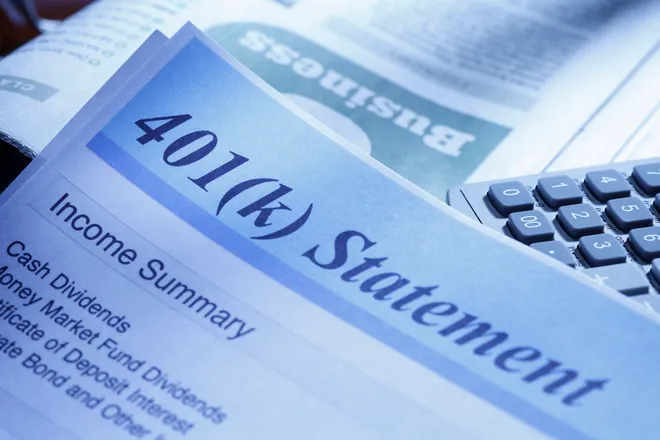No retirement plan, no problem: These states set up automatic IRAs for workers
Eight states have automatically enrolled hundreds of thousands of workers in retirement savings accounts, all but compelling them to deduct money from their paychecks to spend in their golden years.
Retirement researchers applaud the new “automated savings” programs that have sprung up from California to Maine since 2017. By one analysis, from the Pew Charitable Trusts, the state initiatives have enrolled more than 800,000 workers, who have collectively saved more than $1 billion since 2017. Workers are free to opt out of the plans, but most choose to stay in.
“It’s the most exciting thing we’ve seen happen in this space in a long time,” said Jean-Pierre Aubry, associate director of state and local research at the Center for Retirement Research at Boston College. “It has the potential to really change the game.”
State governments have labored for years to find ways to increase the rate of retirement savings by their citizens. Retirees who cannot fund their retirement put a massive strain on social services. Pew estimates the tab at $334 billion in increased state spending over 20 years, if savings rates don't increase.
But not everyone likes the idea of state governments diverting money from workers’ paychecks, even for their own good. Critics say workers would be better off saving for retirement on their own.

Fewer than half of working-age Americans have retirement accounts
Anyone, in theory, can save for retirement. Roughly half of American workers have access to 401(k) plans at work, which allow pre-tax contributions to retirement accounts. Others are free to open individual retirement accounts, which offer similar perks.
But millions of Americans do neither. Fewer than half of working-age Americans have retirement accounts, Census data show.
Much of the problem lies outside the corporate universe of 401(k) plans, which often encourage saving by enrolling workers automatically and matching some of their contributions.
At companies with fewer than 10 employees, 78% of staffers lack access to a retirement plan, according to AARP research. Three-quarters of employees without high school degrees have no access to a retirement plan at work. As a result, those workers seldom save for retirement.
“You’re 15 times more likely to save for retirement if you have the option to save at work through payroll deduction,” said Kim Olson, a senior officer at the Pew Charitable Trusts. “If you have to do this on your own, the chances are very low that you’ll follow through.”
Automated savings programs, or auto-IRAs, began with a 2017 pilot for OregonSaves, according to Pew. Illinois Secure Choice launched in 2018, CalSavers in 2019. Connecticut and Maryland added programs in 2022, Colorado and Virginia in 2023, Maine in 2024.
Fifteen states have enacted 'auto-IRA' programs
Fifteen states, in all, have enacted auto-IRA programs as of January 2024, according to a tracker maintained by Georgetown University. The initiatives are in various stages of rollout, and only eight states have active programs, Olson said.
Here’s how automated savings plans typically work:
- State lawmakers pass legislation that requires employers without retirement plans to join a new state program.
- Once the program begins, employees are automatically enrolled, often at a default contribution rate: 5% of your gross income, in Oregon.
- The state plan is typically a Roth IRA, a variation on the traditional IRA: Your salary is taxed before it goes in, but not when you withdraw your contributions.
- Employers facilitate the program and set up payroll deductions. The state contracts with a private company to administer the program. A state governing board oversees it.
- The state IRA is portable: Workers may take it from job to job.
- Any worker who doesn’t want to participate can opt out at any time.
If the programs prosper and propagate, advocates say, they could vastly expand the population of Americans with retirement savings.
"It's 2024 now, and we see $1.2 billion in these accounts," Olson said. "And I think we went from $500 million to $1 billion in about a year here, at the end. The exponential growth, I think, is going to be quite high, especially as we start to add new programs."
The 401(k) and IRA emerged in the 1970s and took hold as tools for American workers to build retirement savings, with tax subsidies as an incentive.
Over the decades, however, the quest for universal retirement savings has hit a wall. Between 1989 and 2022, the share of workers participating in employer-sponsored retirement plans has barely budged, rising from 51% to 53%, according to Boston College researchers.

Auto-IRAs could introduce millions of Americans to retirement savings
Upper-income Americans are much more likely to save for retirement than their less affluent peers. At the lowest income levels, only about 13% of households held retirement accounts in 2022, according to the federal Survey of Consumer Finances. At the highest income tier, more than 90% of households held retirement accounts.
Automated plans could introduce millions of lower-income Americans to retirement savings, advocates say.
Researchers who studied the Illinois program found that participants tend to be part-time workers, primarily female, younger and unmarried, with high-school educations, working jobs that pay by the hour.
Anyone can opt out of an auto-IRA. Yet, “about 70% of people stay,” Olson said. “And they save.”
The programs work, proponents say, precisely because they enroll workers automatically.
“It’s all about inertia,” Olson said. “If there’s any kind of friction, where we say, ‘You’ve got to sign this form and make a decision in order to save,’ people are very unlikely to do it.”
One reason for the popularity of the auto-IRA is that the accounts double as emergency savings. Savers generally may withdraw money they’ve contributed to a Roth IRA without taxes or penalties.
Should I let the state government raid my paycheck?
Yet, some workers have greeted the new programs warily, venting on social media about the dangers of allowing a state government to raid your paycheck.
“I can't wait to see the mismanagement of funds for this ‘savings program,’” one Reddit user opined in a conversation thread about Oregon’s program.
“I certainly wouldn’t let the state of California manage my money,” another Reddit user wrote on a thread about the California initiative.
Critics of automated savings say workers would be better off opening their own IRA accounts. Advocates say they would love to see hourly wage workers open IRAs. Few do.
“The option has always been there,” Aubry said. “Have people done it? No. That’s why you need this program.”
More:What if the government abolished your 401(k)? Economists say accounts aren't worth it
Proponents say automated savings programs help both workers and their employers, often small businesses whose owners lack the bandwidth to start a 401(k) plan on their own.
“We met with literally dozens of small businesses and talked to them about what worked for them and why,” said David John, a senior strategic policy advisor at the AARP Public Policy Institute who was involved in developing the plans.
The main reason why small business owners didn’t offer 401(k) plans was “that it was complex, and it was expensive,” John said.
By participating in state retirement plans, John said, small businesses gain a competitive advantage they previously lacked.
“You can recruit better people, and you can keep those people,” he said, “because you have a retirement plan.”
Disclaimer: The copyright of this article belongs to the original author. Reposting this article is solely for the purpose of information dissemination and does not constitute any investment advice. If there is any infringement, please contact us immediately. We will make corrections or deletions as necessary. Thank you.







